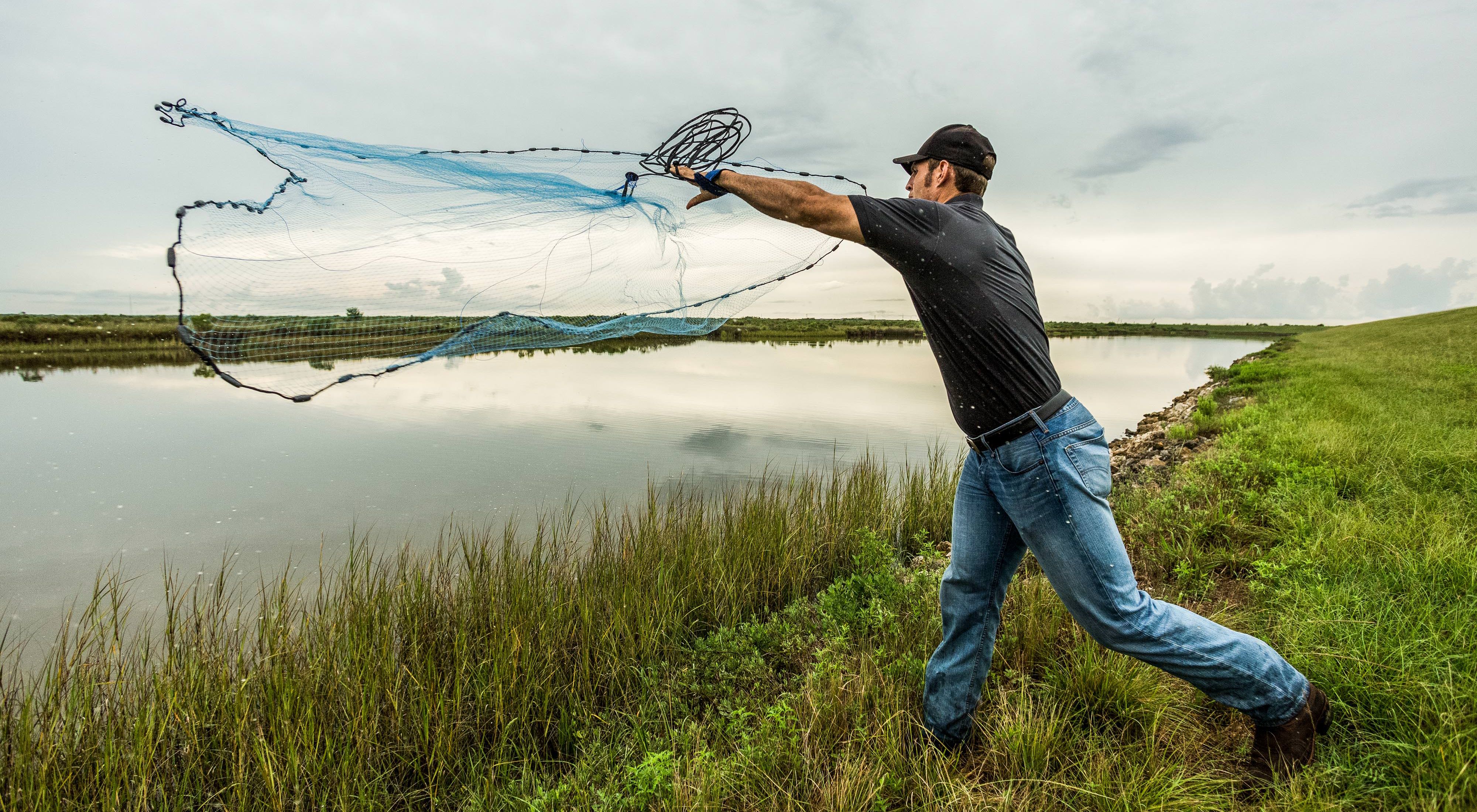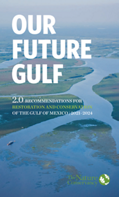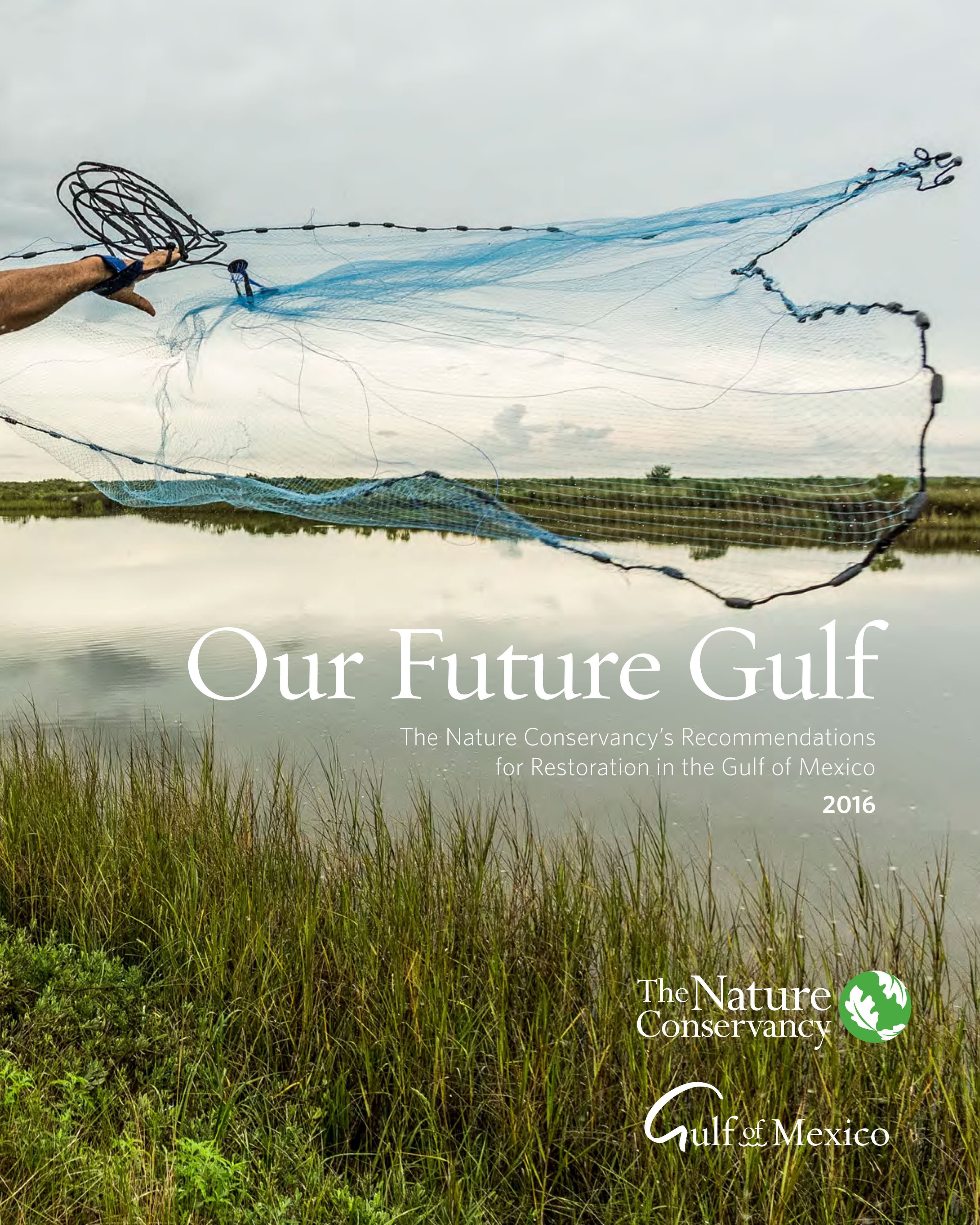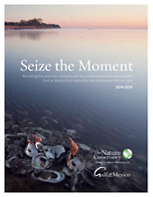Our Future Gulf
Report outlines TNC's recommendations for the restoration of the Gulf of Mexico after the Deepwater Horizon oil spill.
The Gulf of Mexico and its resources are the foundation of the economy of the entire region and are important to the nation’s economic well-being. The human communities surrounding the Gulf have a rich, colorful and diverse history and range from large metropolitan areas like Houston, Tampa and New Orleans to smaller working waterfront settlements like Cedar Key, Florida and Bayou La Batre, Alabama. All of the Gulf ’s cultural, biological and economic diversity is, however, united by the hard fact that, despite its assets, the Gulf of Mexico region faces many challenges.
Read Our Future Gulf 2.0.
In recent years, despite the often-heroic efforts of government officials, nonprofit organizations, businesses and engaged individuals, we have seen the condition of the Gulf and many of its bays, estuaries and tributary rivers continue to decline, jeopardizing the values the Gulf of Mexico provides to coastal communities and to the country as a whole.
An acute example of that decline was the Deepwater Horizon (DWH) Oil Spill in 2010 which caused both loss of human life and unprecedented damage to the environment. Now, however, resolution of the fines and damages resulting from that spill offers a unique opportunity to respond to the impacts of the spill itself and to address the Gulf’s long-term problems.
We do not know of another instance where so much money has been guaranteed over the longterm for the restoration of a major ecosystem. The Nature Conservancy believes that, while we cannot put the Gulf ecosystem back to the way it once was, by investing the BP settlement money wisely and using it to leverage other public and private funds to restore the natural systems and features of the Gulf of Mexico, we can produce immense returns for the larger Gulf. We can also make the region’s communities and economies more resilient to ongoing stresses, such as storms and sea-level rise intensified by climate change.
Key points of emphasis in Our Future Gulf 2.0 include:
- Federal, state, and local agencies are making good progress in planning for and implementing Gulf restoration; many excellent restoration projects are already completed or underway with lessons for projects to come.
- Climate change in the form of more frequent and intense tropical storms and rainfall events and increasing flows in the Mississippi River is affecting both the human and natural communities of the Gulf. Reinforcing natural features is a cost-effective means of making communities more resilient to storms.
- Oysters have been a key element of the Gulf ecosystem, but oysters are in trouble across the region. Large scale oyster reef restoration is essential to restoring the health of the overall system.
- Restoration should continue to be based on a watershed approach that includes addressing impacts to estuaries from tributary rivers and land-based activities.
- Gulf communities are not all benefitting equally from Gulf restoration; we must reach out to the full diversity of people and communities to ensure their inclusion in the next iteration of Gulf restoration.



